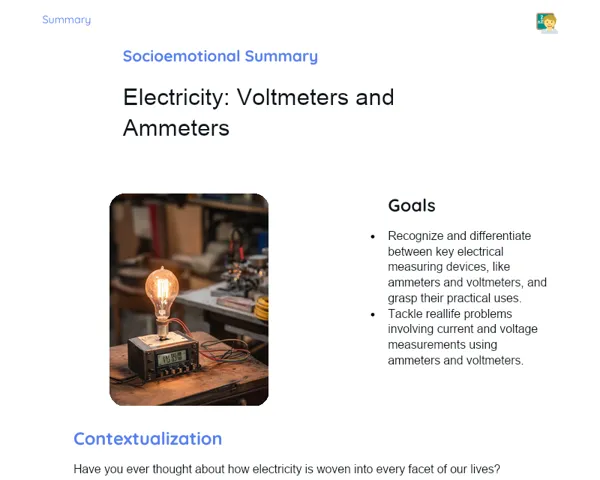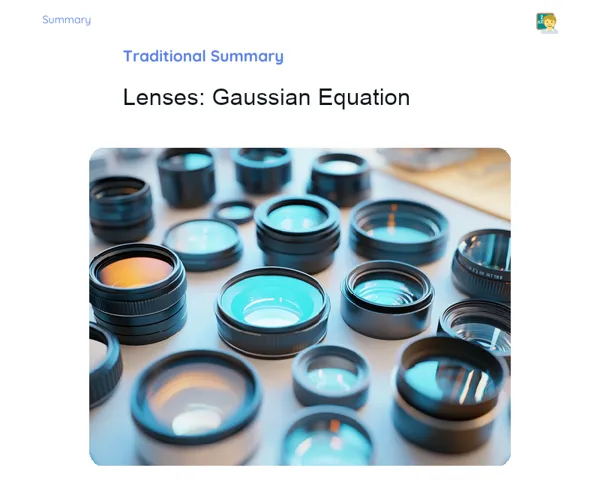Socioemotional Summary Conclusion
Goals
1. Comprehend the idea of momentum and its significance in Physics.
2. Work out momentum using the formula Q = mv.
3. Identify and manage emotions while exploring new and challenging topics.
Contextualization
Have you ever observed how the pace of a cricket ball or a soccer ball varies depending on who strikes it? This variation is linked to momentum, a basic yet powerful concept in Physics! Be it in sports, local transport, or everyday scenarios, momentum helps us understand the impact of forces on objects. Let’s embark on this learning journey together while also honing our skills in handling emotions during challenging times.
Exercising Your Knowledge
Definition of Momentum
Momentum is essentially the product of an object's mass and its velocity, making it a vector with both magnitude and direction. This idea is pivotal in Physics as it helps us predict how objects behave when they move or collide.
-
Momentum is a vector: meaning it carries both magnitude and direction; this quality is crucial when analysing collisions and motions.
-
Formula: Q = mv, where 'Q' stands for momentum, 'm' is the mass of the object, and 'v' its velocity. This basic formula allows us to perform accurate calculations fundamental to understanding physical events.
-
Importance in Physics: it explains everyday occurrences, such as vehicle collisions on our busy roads or the performance of athletes in local matches.
Conservation of Momentum
In an isolated system, where no outside forces interfere, the total momentum remains unchanged. This law, known as the conservation of momentum, is key to understanding what happens during collisions and interactions between different bodies.
-
Isolated Systems: in a system with no external forces acting, momentum is preserved, meaning there is neither addition nor loss.
-
Collisions: in elastic collisions, while the momentum of individual objects may differ before and after impact, the overall momentum remains unchanged. In inelastic collisions, objects might stick together, yet total momentum is still conserved.
-
Practical Applications: the conservation of momentum is vital in designing safety features in vehicles and even in developing sports tactics that are commonly observed in games.
Practical Application: Billiards Game
Billiards offers a clear example of momentum in action. When a ball is struck, momentum is transferred from one ball to the other, altering direction and speed.
-
Transfer of Momentum: when the cue ball hits another ball, some or all of its momentum gets transferred, changing the path and speed of the hit ball.
-
Vector Analysis: by looking at the direction and speed of each ball after the collision, we can see the vector nature of momentum in play.
-
Strategy and Calculation: seasoned players often use their understanding of momentum to predict where the balls will come to rest, which is a practical demonstration of the concept in gameplay.
Key Terms
-
Momentum: the product of an object's mass and its velocity, represented by the formula Q = mv.
-
Vector: a quantity having both magnitude and direction, which is essential for analysing momentum.
-
Conservation of Momentum: the principle that the total momentum in an isolated system remains constant.
For Reflection
-
How did you feel when learning a new concept that combines both mathematics and Physics? What emotions came up, and how did you manage them?
-
Recall a daily situation where momentum could be observed (for example, during a ball game or even in a minor vehicular mishap). How does this concept help you understand that event better?
-
During group activities, what was your experience collaborating with peers to solve problems? What emotions emerged, and how did you support each other?
Important Conclusions
-
Momentum is crucial for understanding the behaviour of objects in motion and during collisions.
-
This concept finds applications in many everyday scenarios, such as sports incidents and road mishaps.
-
Throughout the lesson, we not only improved our calculation prowess but also learnt valuable techniques for emotional management, which are essential for both academic success and personal well-being.
Impacts on Society
Understanding momentum is key in many areas of our modern society. For instance, in transportation, the concept aids in designing safety measures such as airbags and ABS systems, which are critical for saving lives in road accidents. In sports, athletes and coaches use these principles to enhance performance and prevent injuries, reflecting the pervasive influence of physics in activities we enjoy, be it cricket, soccer, or motorsports.
From an emotional standpoint, linking the concept of momentum to how we handle challenging situations can be very enlightening. Just as in a collision where the properties of mass and velocity determine the outcome, recognising and managing our emotions effectively can lead to better resolutions in both personal and professional interactions. Understanding and regulating these emotional responses, much like calculating momentum, can be a transformative tool in daily life.
Dealing with Emotions
To better manage your emotions when exploring topics like momentum, I recommend practising a method based on the RULER approach. Begin by recognizing your feelings as you work on Physics problems – whether you're feeling anxious, frustrated, or even excited. Try to understand the triggers behind these emotions, such as the challenge posed by a complex problem or the pressure of getting the right answer. Accurately naming these emotions is important, as it is the first step in handling them. Express your feelings constructively, perhaps in discussion with a friend or by jotting down your thoughts. Finally, regulate your emotions with strategies like deep breathing or taking a short break to relieve stress.
Study Tips
-
Regularly practise various momentum problems to solidify your understanding and improve calculation skills.
-
Utilise online tutorials, videos, and animations that demonstrate practical applications of momentum, whether in sports or vehicle dynamics.
-
Consider forming study groups to discuss and solve problems collectively, which also serves as an opportunity to build both academic and social skills.


